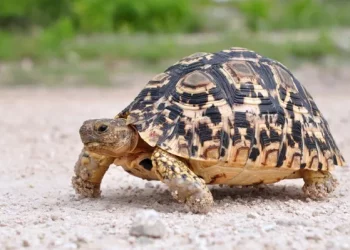Identifying the gender of a tortoise can be a challenging but essential task for many pet owners and breeders. Knowing whether your tortoise is male or female can help in providing appropriate care, understanding behavioral patterns, and ensuring proper breeding practices. This article provides a comprehensive guide on how to determine the gender of your tortoise, covering physical characteristics, behavioral traits, and species-specific differences.
Understanding Sexual Dimorphism in Tortoises
Sexual dimorphism refers to the physical differences between males and females of the same species. In tortoises, these differences can vary significantly depending on the species. Generally, mature tortoises exhibit more pronounced sexual dimorphism than juveniles, making it easier to determine their gender as they age.
Physical Characteristics
Size and Shape
One of the primary indicators of a tortoise’s gender is the size and shape of its body.
Males: Typically, male tortoises are smaller and more streamlined compared to females. They often have longer, narrower shells.
Females: Female tortoises usually have larger, more rounded bodies and shells to accommodate egg production.
Plastron Shape
The plastron, or the underside of a tortoise’s shell, also provides clues about its gender.
Males: Male tortoises generally have a concave plastron. This curved shape helps them mount females during mating.
Females: Female tortoises typically have a flat or slightly convex plastron, providing more space for carrying eggs.
Tail Size and Shape
Examining the tail is another reliable method to determine a tortoise’s gender.
Males: Male tortoises usually have longer, thicker tails. The vent (cloaca) is located closer to the tip of the tail, away from the base of the shell.
Females: Female tortoises tend to have shorter, thinner tails, with the vent positioned closer to the base of the shell.
Cloacal Opening
The position of the cloacal opening (vent) on the tail can also indicate gender.
Males: In males, the cloacal opening is further from the body, closer to the tip of the tail.
Females: In females, the cloacal opening is nearer to the body, closer to the base of the tail.
Anal Scutes
The anal scutes are the plates on the rear of the tortoise’s shell.
Males: Male tortoises often have more pointed and angular anal scutes.
Females: Female tortoises tend to have wider and more rounded anal scutes, which facilitate egg laying.
Behavioral Traits
Observing behavioral differences can also help identify the gender of a tortoise.
Mating Behavior
Mating behavior is one of the most distinct ways to differentiate between male and female tortoises.
Males: Male tortoises are typically more aggressive and territorial. During the mating season, they may exhibit behaviors such as head bobbing, circling, biting, and attempting to mount other tortoises.
Females: Female tortoises are generally more passive. They may show nesting behavior, such as digging in the substrate to prepare for laying eggs.
Territoriality
Males: Males are often more territorial and may engage in fights with other males to establish dominance.
Females: Females are usually less aggressive and more tolerant of other tortoises.
See Also: What Do Marginated Tortoises Eat?
Activity Levels
Males: Male tortoises can be more active and restless, especially during the breeding season.
Females: Female tortoises may be more sedentary, particularly when they are gravid (carrying eggs).
Species-Specific Differences
Different species of tortoises exhibit unique characteristics that can help in gender identification. Here are a few examples:
Red-Footed Tortoise (Chelonoidis carbonarius)
Males: Male red-footed tortoises have a concave plastron, longer tails, and more pronounced femoral pores.
Females: Females have a flat plastron, shorter tails, and less noticeable femoral pores.
Russian Tortoise (Testudo horsfieldii)
Males: Male Russian tortoises have longer tails and a more pronounced plastron concavity.
Females: Females have shorter tails and a flatter plastron.
Greek Tortoise (Testudo graeca)
Males: Male Greek tortoises exhibit a concave plastron and longer tails with a cloacal opening further from the body.
Females: Females have a flat plastron, shorter tails, and a cloacal opening closer to the base.
Handling and Ethical Considerations
When examining your tortoise to determine its gender, it’s important to handle it gently and ethically. Tortoises can become stressed if handled improperly, so always ensure their safety and comfort. Avoid invasive methods and never forcefully manipulate the tortoise’s body parts.
Practical Tips for Gender Identification
Use a Comparison Method
If you have multiple tortoises, comparing them side by side can make it easier to spot differences in size, shape, and behavior.
Seek Expert Advice
If you’re unsure about your observations, consult a veterinarian or a reptile expert who can provide a professional assessment of your tortoise’s gender.
Age Matters
Remember that it’s easier to determine the gender of mature tortoises. Juveniles may not exhibit clear sexual dimorphism, so patience is key.
Conclusion
Determining the gender of your tortoise involves a combination of observing physical characteristics, behavioral traits, and understanding species-specific differences. By examining features such as size, plastron shape, tail length, cloacal opening, and anal scutes, as well as noting mating and territorial behaviors, you can confidently identify whether your tortoise is male or female. Always handle your tortoise with care and seek professional advice if needed. Knowing the gender of your tortoise can greatly enhance your ability to provide appropriate care and create a harmonious environment for your reptilian companion.
Related Topics:


























